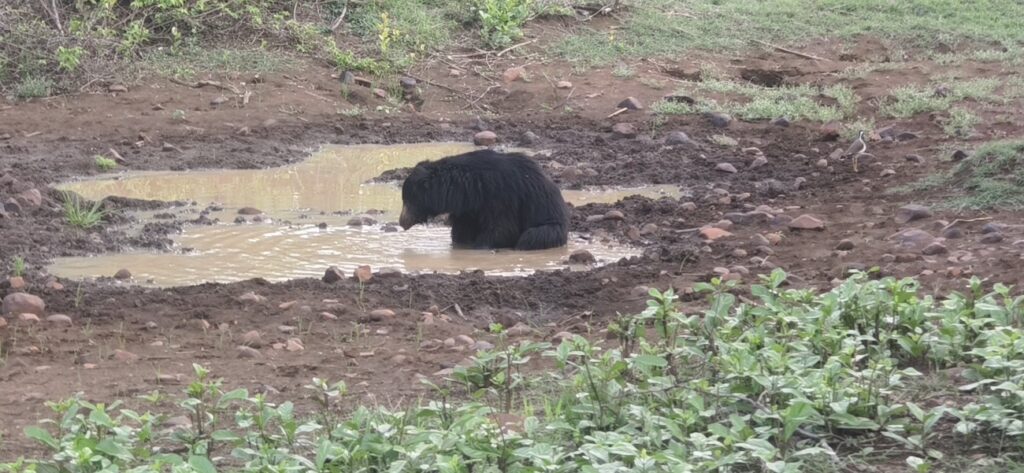
Introduction to the Sloth Bear in Tadoba
The Sloth Bear (Melursus ursinus) is one of the most fascinating yet elusive animals in Tadoba Andhari Tiger Reserve. Known for its shaggy black coat, long claws, and unique insect-feeding behavior, this bear is rarely seen during the day. Recently, a rare sighting of a sloth bear bathing in a Tadoba waterhole amazed wildlife enthusiasts and photographers alike.
Rich Habitat and Biodiversity
Tadoba’s mixed forests, bamboo thickets, and waterholes provide a perfect habitat for sloth bears. While the park is world-famous for its tiger population, it also protects a wide variety of species including leopards, wild dogs, gaur, and over 200 bird species.
Importance of Waterholes in Tadoba
During hot summer months, waterholes become lifelines for wildlife. Seeing a sloth bear cooling off in a muddy pool not only reflects natural behavior but also shows the importance of these seasonal water sources in India’s dry forests.
Sloth Bear Behavior in the Wild
Feeding Habits and Adaptations
Sloth bears are primarily insectivorous, relying on termites, ants, and honey. Their long snouts and flexible lips work like a natural vacuum cleaner, allowing them to suck insects straight from mounds. They also consume fruits, making them essential for forest seed dispersal.
Shy but Surprisingly Agile
Despite their heavy build, sloth bears can run faster than humans and are excellent climbers. Mothers are often seen carrying cubs on their backs — a rare trait among bear species.
Wildlife Photography in Tadoba
Capturing the Perfect Moment
Photographing a sloth bear in the wild requires patience, timing, and a bit of luck. Unlike tigers that often frequent open clearings, sloth bears are shy and prefer dense vegetation. This makes the Tadoba sloth bear waterhole sighting even more special for wildlife photographers.
Tips for Wildlife Enthusiasts
- Use silent shooting mode to avoid disturbing animals.
- Early mornings and late evenings are the best times for spotting.
- Always respect animal space and never block their path at waterholes.
Conservation Significance of Sloth Bears in India
Sloth bears are listed as Vulnerable on the IUCN Red List due to habitat loss and human-wildlife conflict. Reserves like Tadoba play a critical role in ensuring their survival. Protecting waterholes, controlling forest fires, and reducing human encroachment are key measures for long-term conservation.
Conclusion
The recent sloth bear sighting at Tadoba is more than just a lucky photograph — it is a reminder of India’s rich biodiversity and the need to protect it. Whether you are a photographer, a nature lover, or simply an adventurer, Tadoba offers unforgettable wildlife experiences beyond its iconic tigers.
